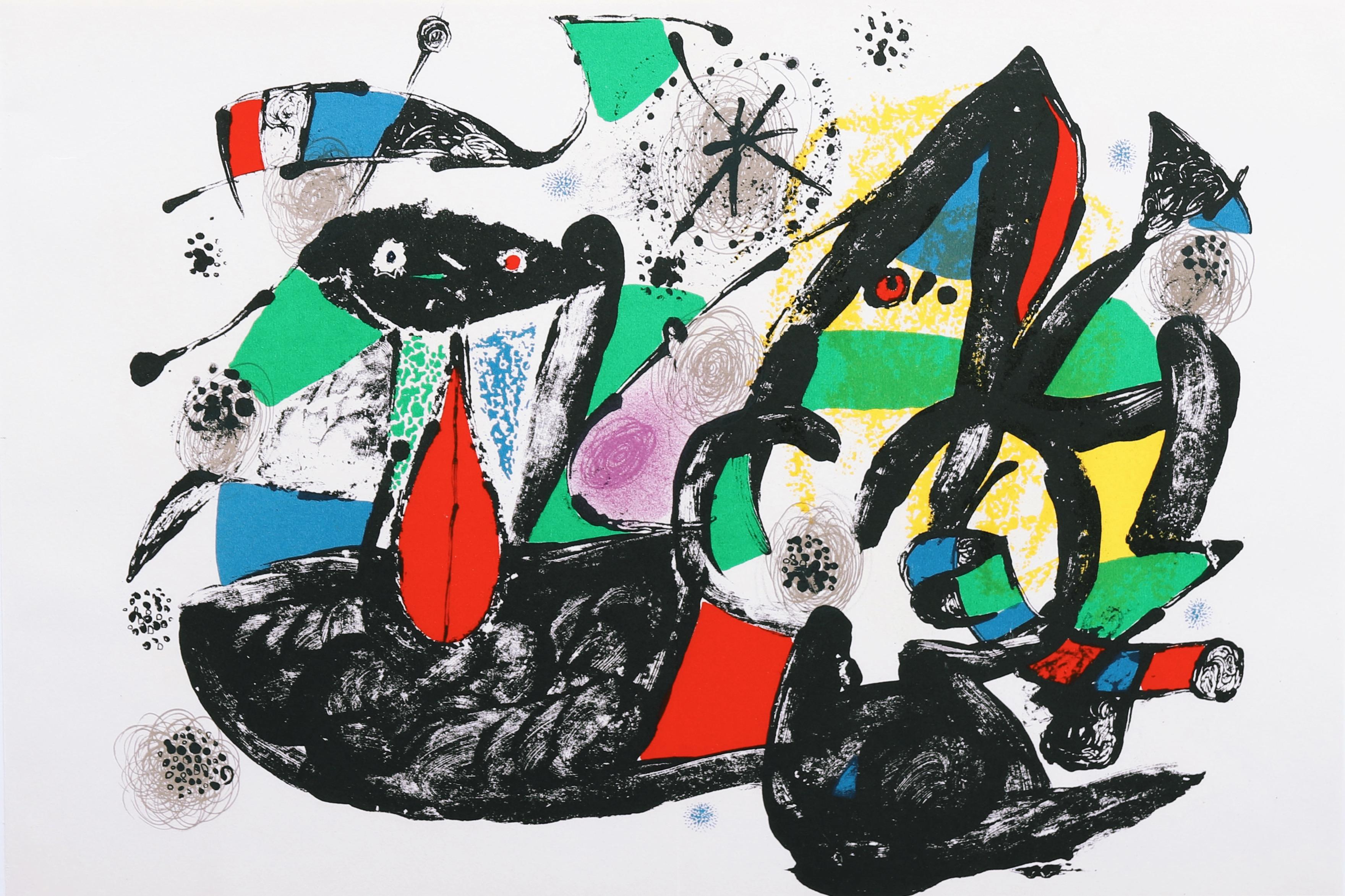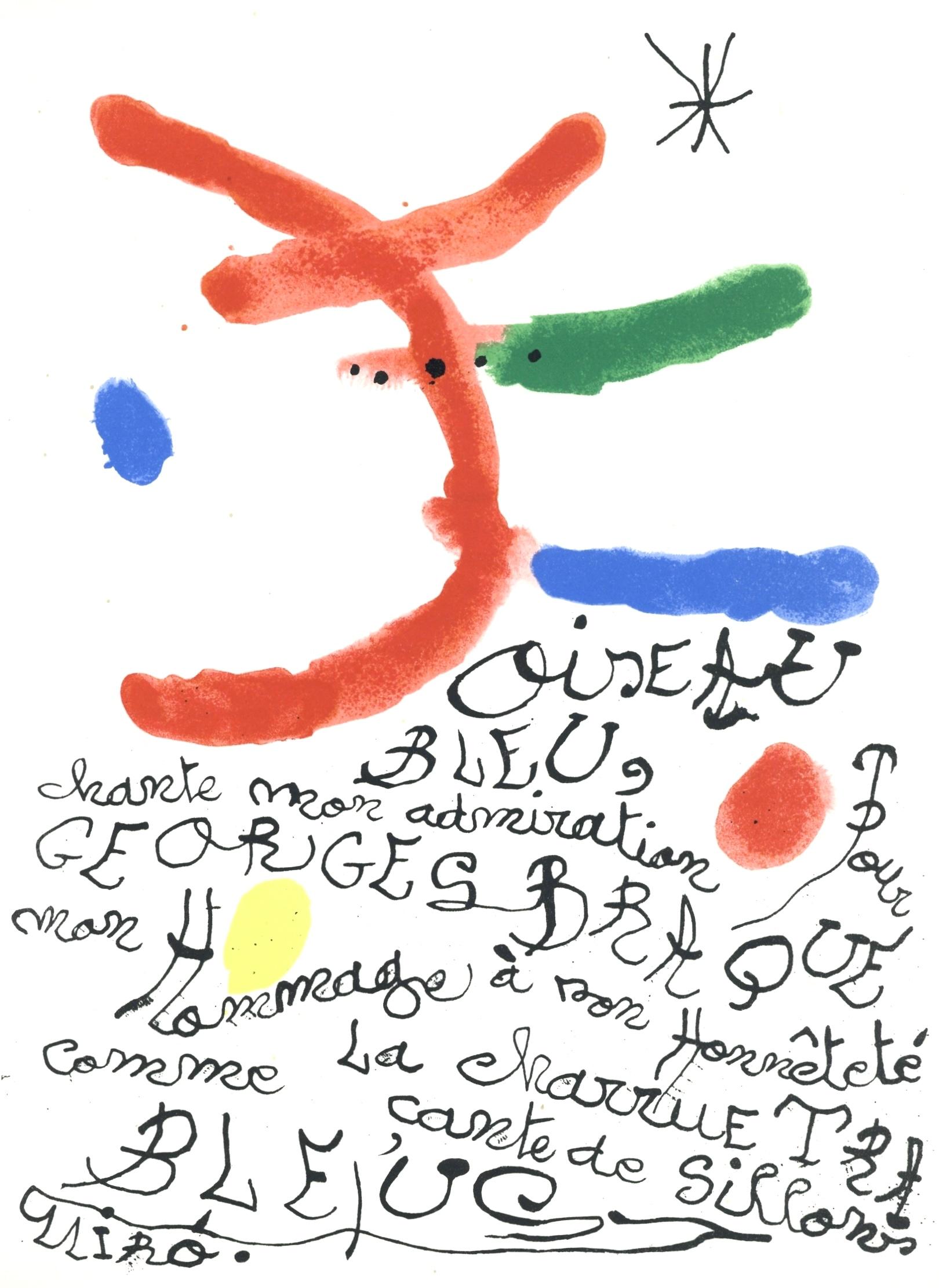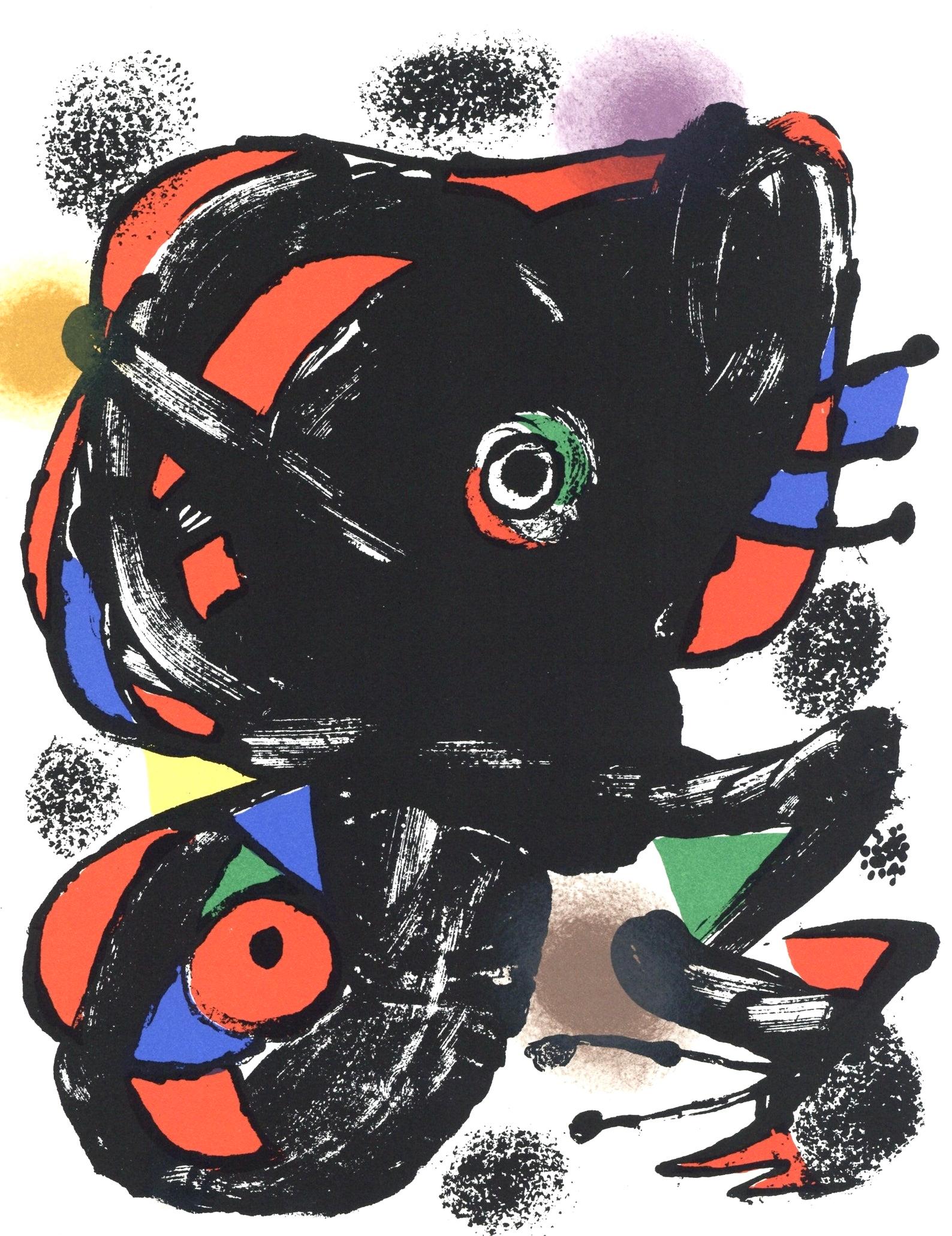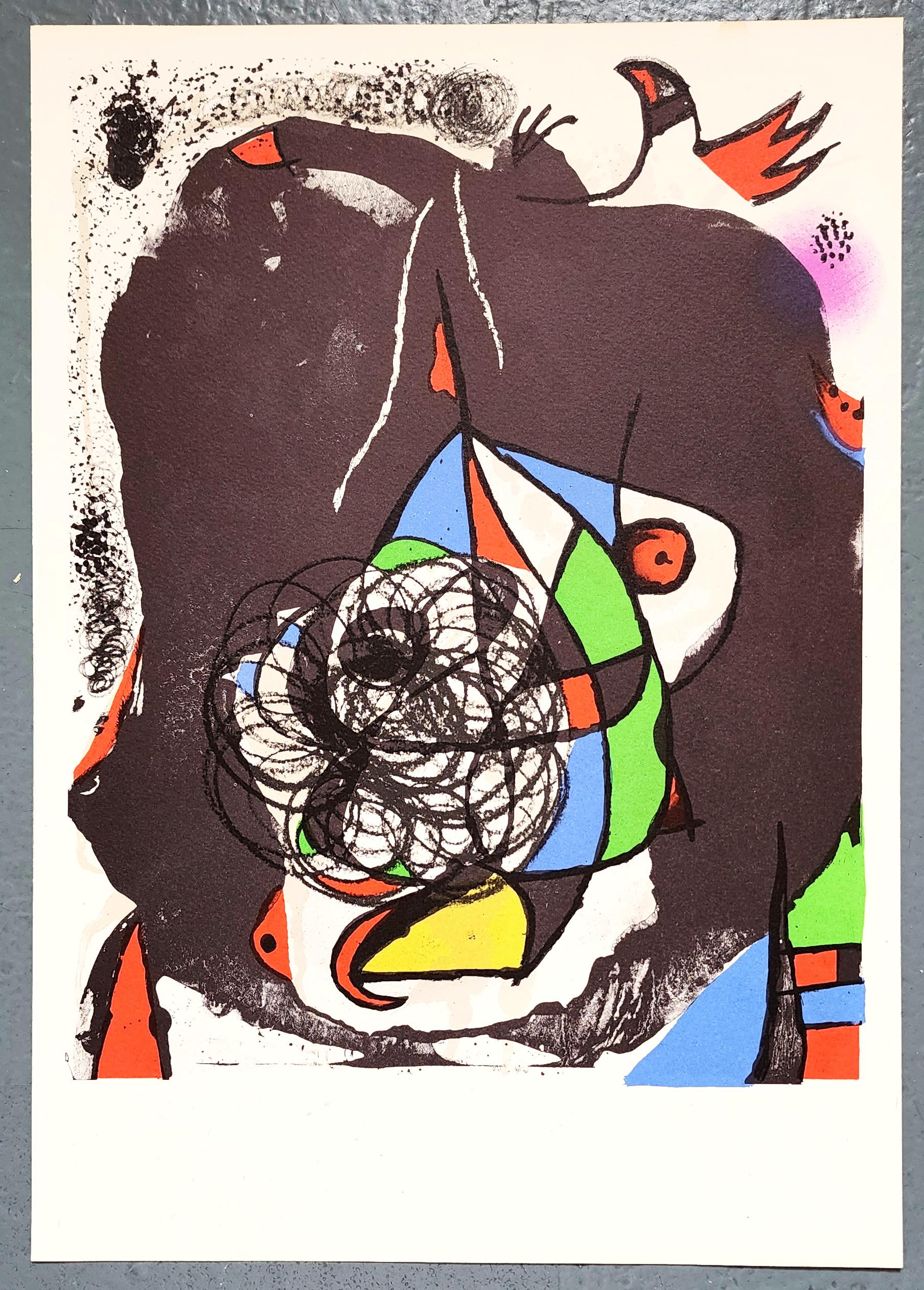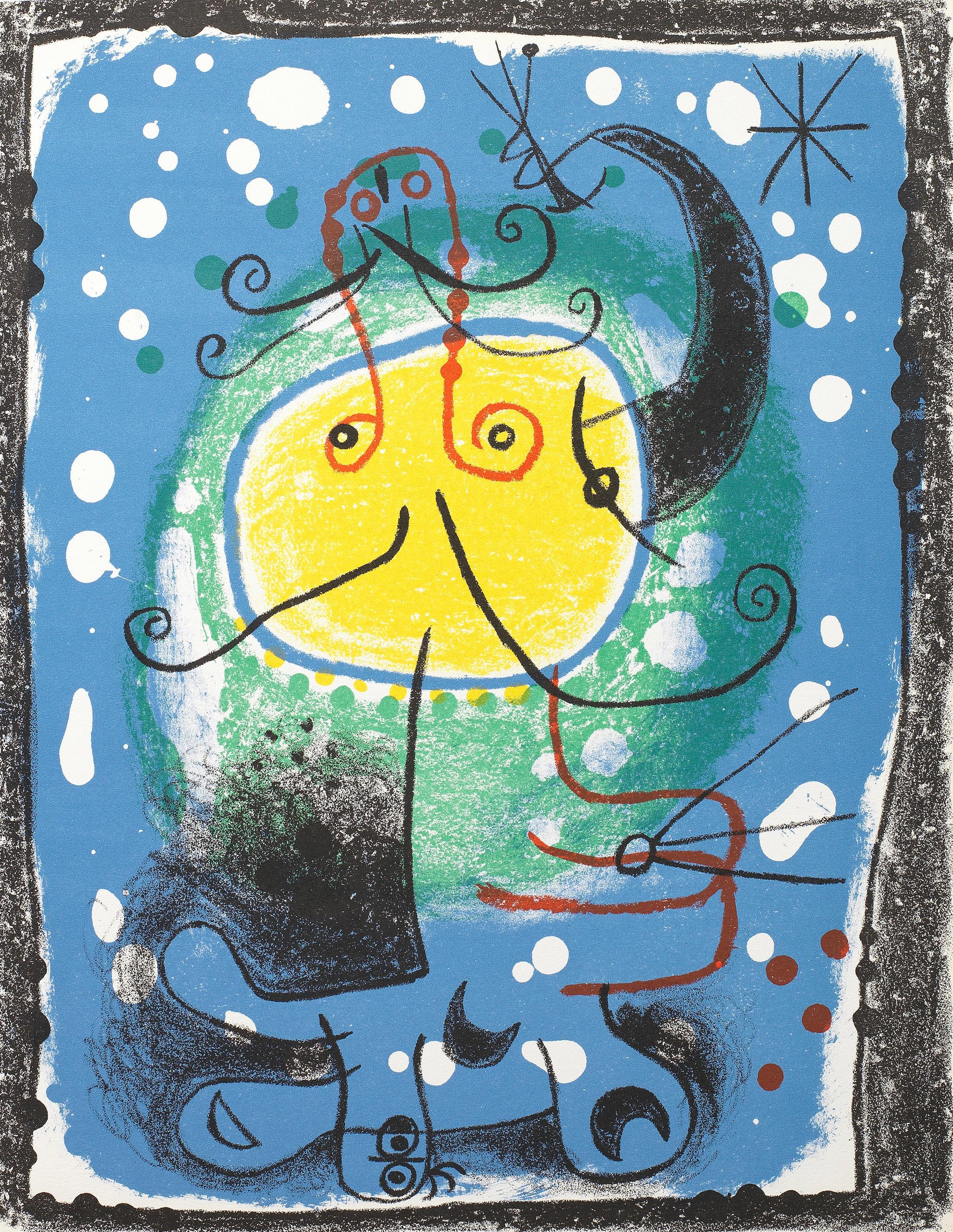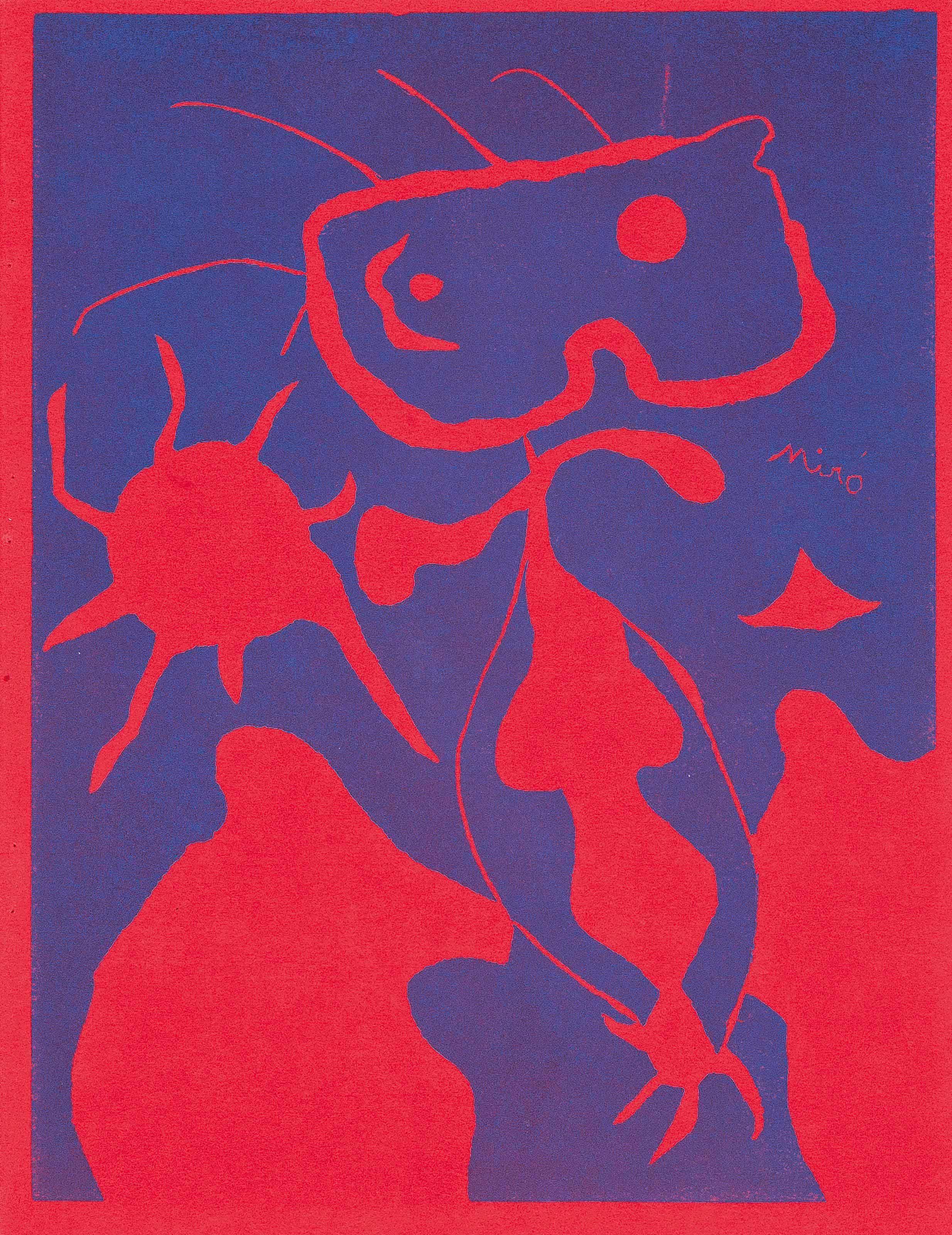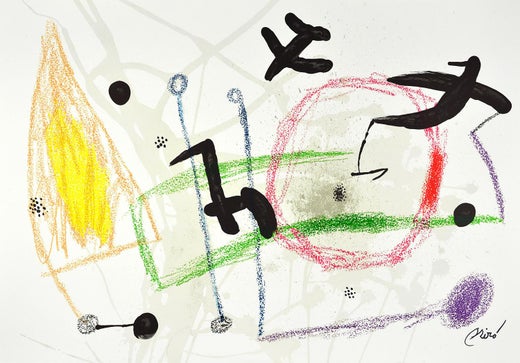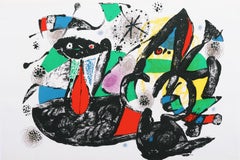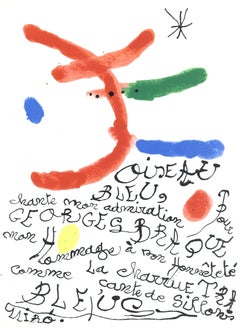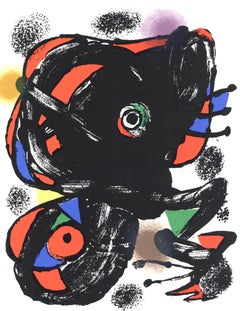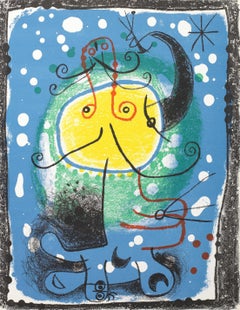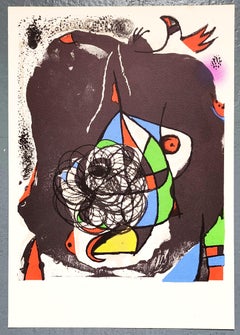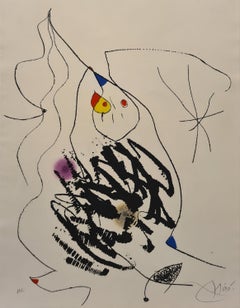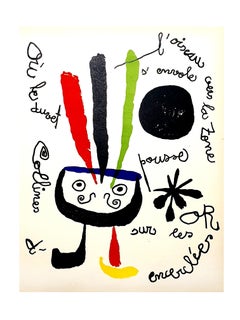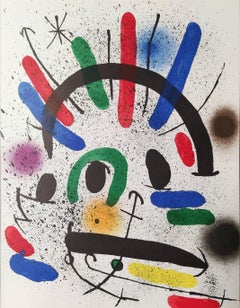This exquisite lithograph by Joan Miro (1893–1983), titled Oiseau Bleu (Blue Bird), originates from the 1963 folio Derriere le Miroir, published by Maeght Editeur, Paris, under the direction of Aime Maeght, and printed by Mourlot Freres, Paris. Executed during the height of Miro’s mature period, this poetic composition embodies the artist’s fascination with the interplay between form, color, and cosmic symbolism. Through his lyrical use of line and vibrant hues, Miro transforms the image of the bird—a recurring motif in his visual language—into a jubilant expression of freedom and imagination. Oiseau Bleu exemplifies Miro’s capacity to merge spontaneity and precision, creating a timeless dialogue between abstraction and dreamlike vision.
Executed on velin paper, this lithograph measures 22 x 15 inches (55.9 x 38.1 cm), as issued. Signed in the plate and unnumbered, as issued. The edition reflects Miro’s mastery of both color and gesture, fusing Surrealist spontaneity with the refined craftsmanship of the Mourlot ateliers.
Artwork Details:
Artist: Joan Miro (1893–1983)
Title: Oiseau Bleu (Blue Bird), from Derriere le Miroir, 1963
Medium: Lithograph on velin paper
Dimensions: 22 x 15 inches (55.9 x 38.1 cm), as issued
Inscription: Signed in the plate and unnumbered, as issued
Date: 1963
Publisher: Maeght Editeur, Paris
Printer: Mourlot Freres, Paris
Catalogue Raisonne Reference: Cramer, Patrick, and Joan Miro. Joan Miro, Catalogue Raisonne des Livres Illustres. P. Cramer, Geneva, 1989, illustration 87
Condition: Well preserved, consistent with age and medium
Provenance: From the 1963 folio Derriere le Miroir, published by Maeght Editeur, Paris
Notes:
Excerpted from the folio (translated from French): Taken from this special issue of “Behind the Mirror,” CCCL examples on velin de Rives were numbered, constituting the original deluxe edition of Derriere le Miroir. The lithographs for this issue were printed in the ateliers of Mourlot Editeur, Levallois. The text was printed by Fequet et Baudier, typographers. Finished printing 1963.
About the Publication:
Derriere le Miroir (translated as "Behind the Mirror") was an iconic French art periodical published from 1946 to 1982 by Maeght Editeur, one of the most influential art publishers of the 20th century. Founded by Aime Maeght in Paris, the publication was conceived as a visual and literary collaboration between leading modern artists, poets, and critics. Each issue functioned as both an exhibition catalogue and a work of art in itself—featuring original lithographs printed directly from the artists' stones or plates, alongside essays, poems, and critical commentary. Over the course of 36 years, Derriere le Miroir produced more than 250 issues and showcased an extraordinary roster of artists including Henri Matisse, Marc Chagall, Joan Miro, Georges Braque, Alexander Calder, Fernand Leger, Pierre Bonnard, Alberto Giacometti, Eduardo Chillida, Ellsworth Kelly, Francis Bacon, Paul Rebeyrolle, Claude Garache, Antoni Tapies, Bram van Velde, Pierre Alechinsky, Pol Bury, Shusaku Arakawa, and Gerard Titus-Carmel. Printed in the ateliers of Mourlot, Arte, and Imprimerie Moderne du Lion, the periodical set new standards for quality in color lithography, combining fine art printing with elegant typography and poetic text. Beyond its visual brilliance, Derriere le Miroir also became a cultural chronicle of postwar European modernism. Each issue coincided with exhibitions held at Galerie Maeght, providing a collectible and widely accessible record of groundbreaking shows. Its integration of image, text, and philosophy created a dialogue between art and literature that elevated the modern art book to new aesthetic heights. Today, Derriere le Miroir remains one of the most sought-after and historically significant art publications, prized by collectors and scholars alike for its craftsmanship, influence, and its role in defining the visual language of 20th-century modernism. The Maeght Foundation in Saint-Paul-de-Vence continues to honor this legacy through exhibitions and archival preservation of the series, affirming Derriere le Miroir's enduring place in the history of modern art and fine art publishing.
About the Artist:
Joan Miro (1893–1983) was a Catalan painter, sculptor, and ceramicist whose imaginative, dreamlike vision helped spearhead the Surrealist movement and left an indelible mark on modern art. Born in Barcelona and deeply rooted in Catalan culture, Miro moved to Paris in the early 1920s where his playful shapes, cosmic motifs, and childlike yet sophisticated abstractions broke new ground alongside the great innovators of his time. His artistic dialogue aligned with contemporaries such as Pablo Picasso, Henri Matisse, Alexander Calder, Marc Chagall, Salvador Dali, Jackson Pollock, Georges Braque, Wassily Kandinsky, Marcel Duchamp, and Man Ray, each of whom challenged the conventions of form, color, and symbolism. Miro distilled these ideas into a uniquely poetic visual vocabulary—birds, stars, and bold spectral forms emerging from flat planes of color—that has inspired scores of artists and continues to influence modern and contemporary masters including Banksy, Damien Hirst, Jeff Koons, Andy Warhol, and Jasper Johns. His works are represented in leading museums worldwide, including MoMA, the Guggenheim, the Tate, and the Centre Pompidou, and remain highly sought after by collectors. The highest price ever paid for a Joan Miro artwork is approximately $37.06 million USD, achieved in June 2012 at Sotheby’s London for Peinture (Etoile Bleue) (1927).
Joan
Miro Oiseau...
